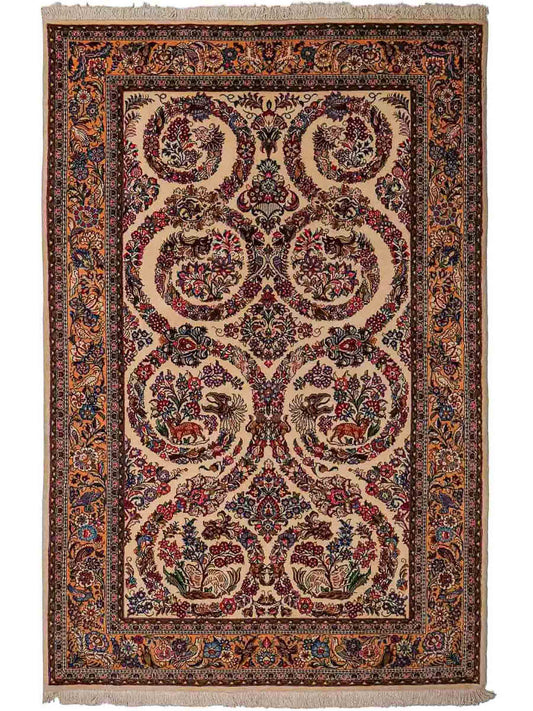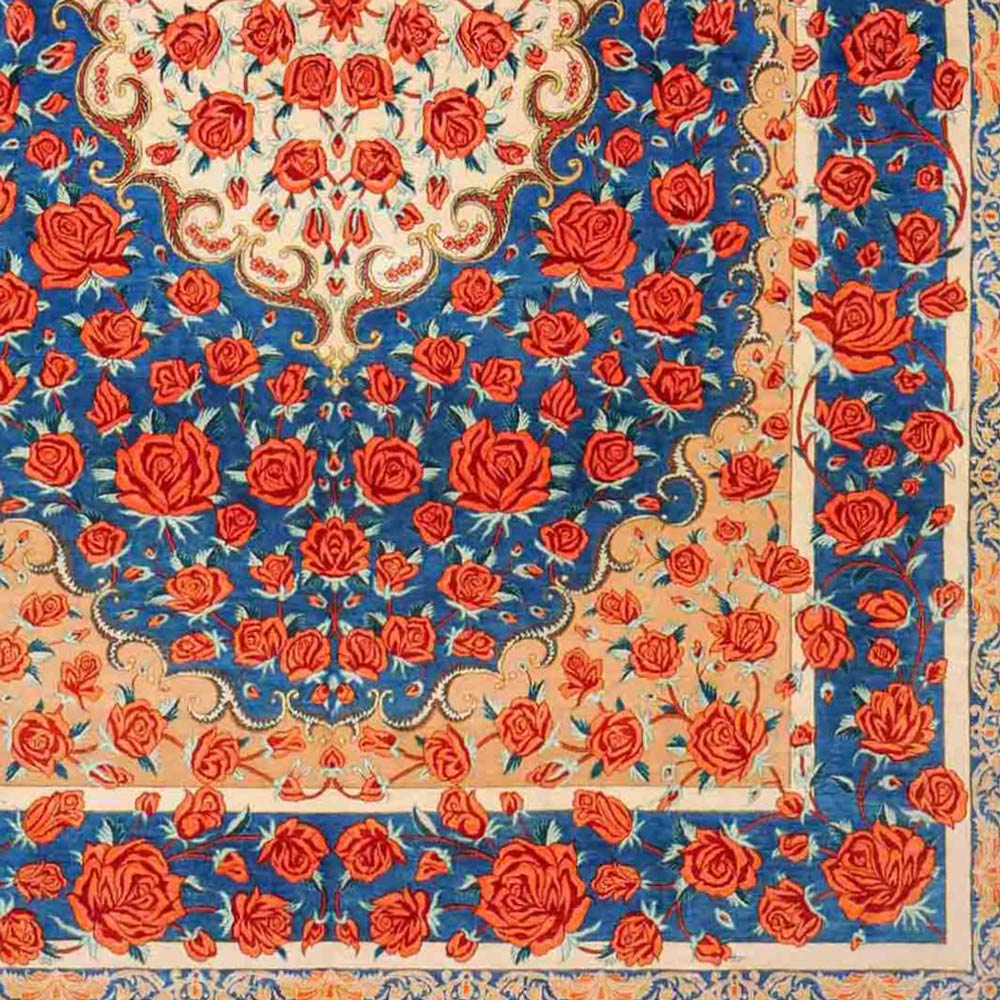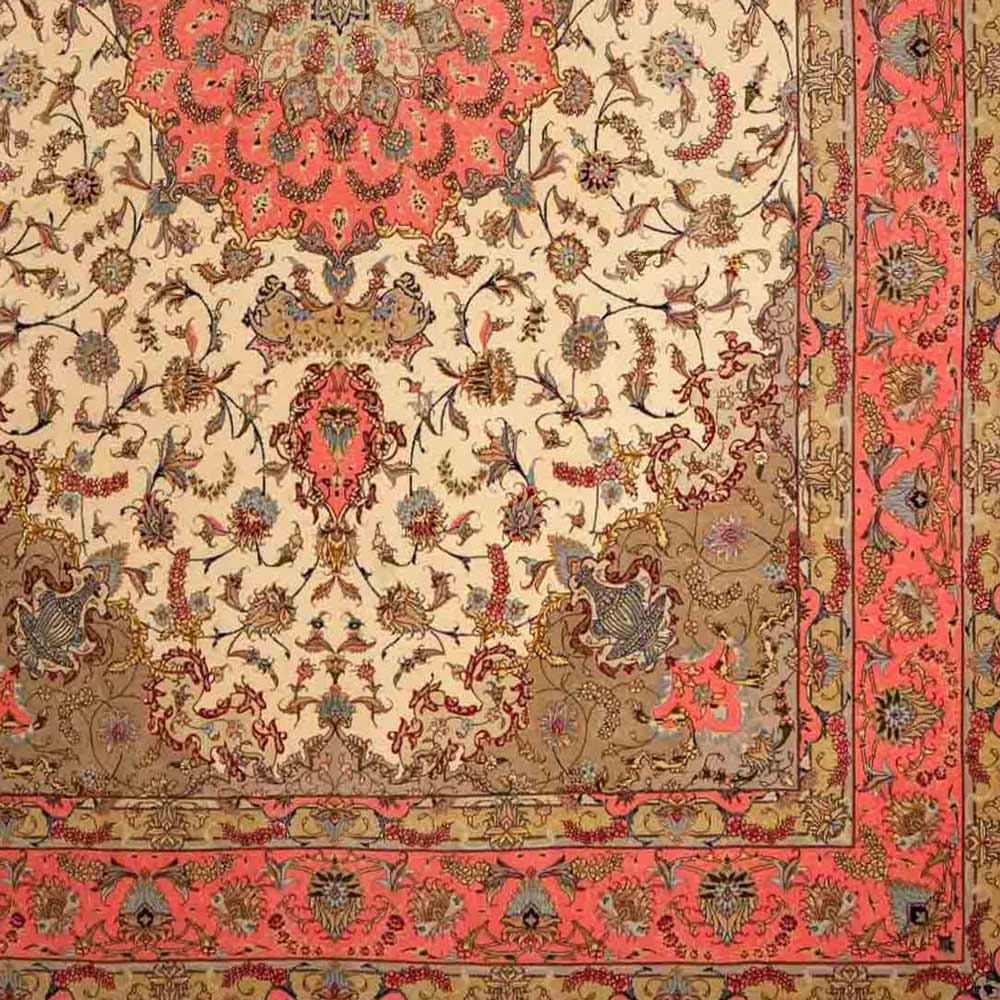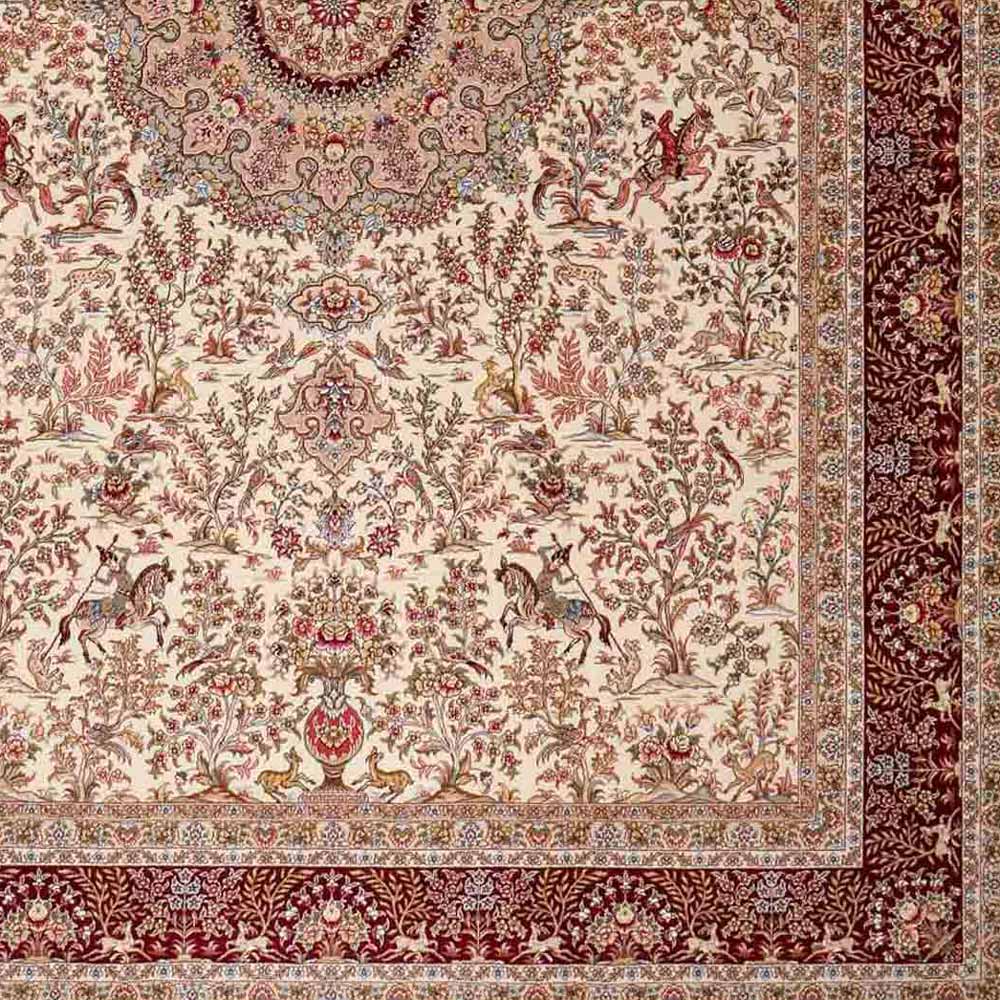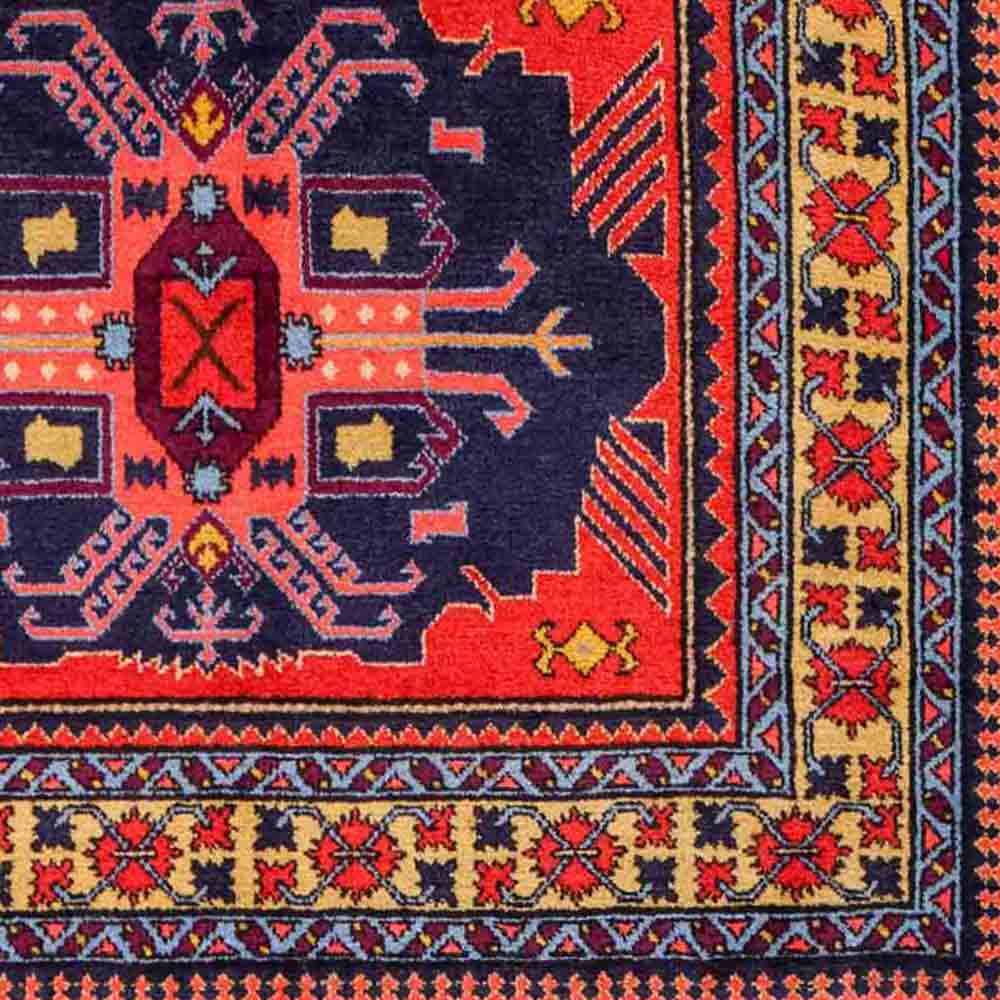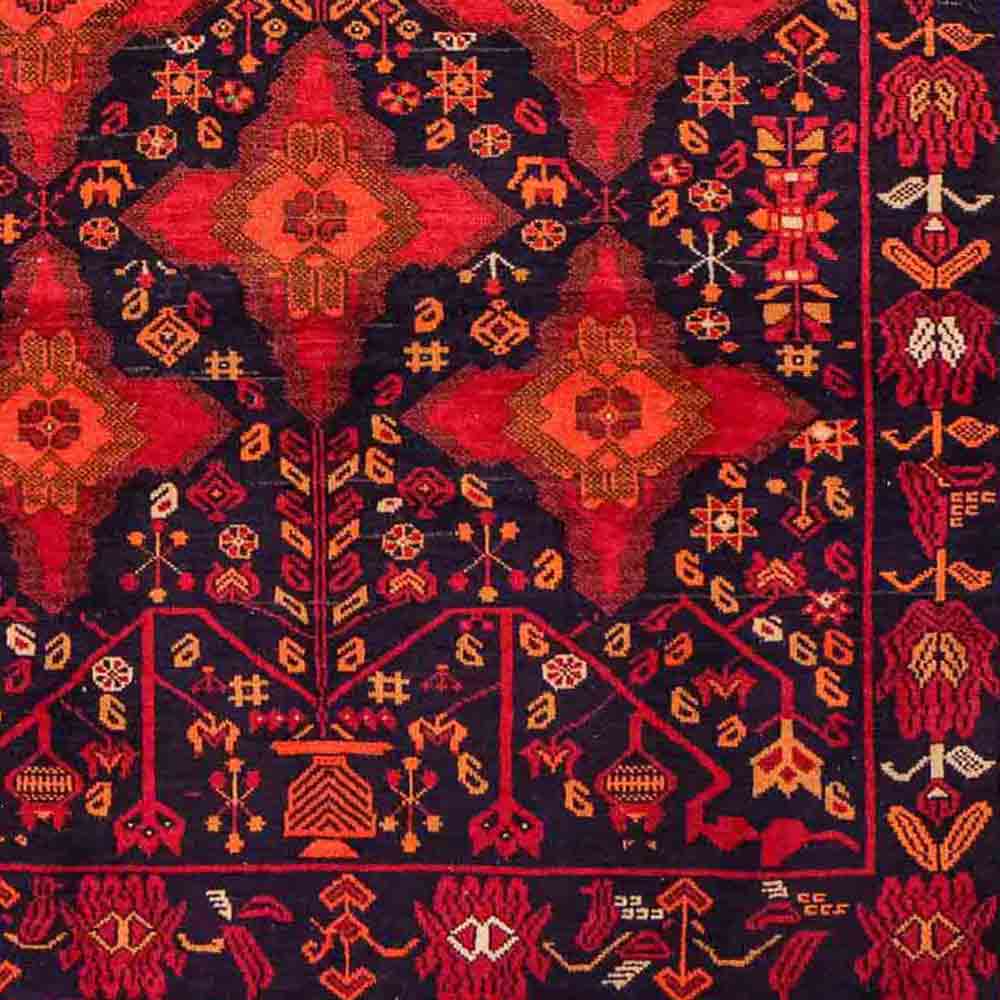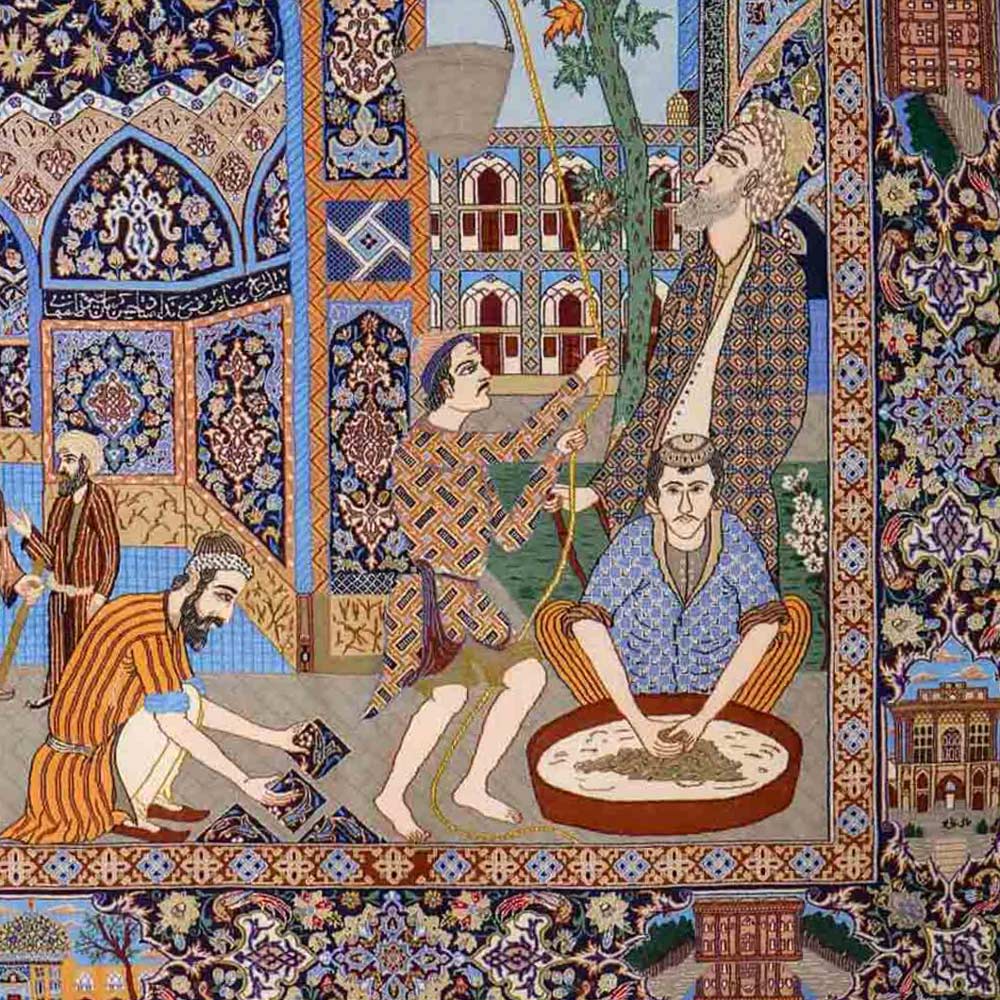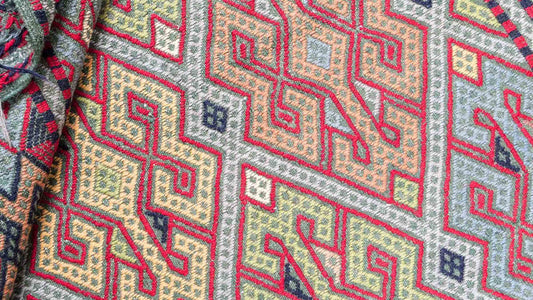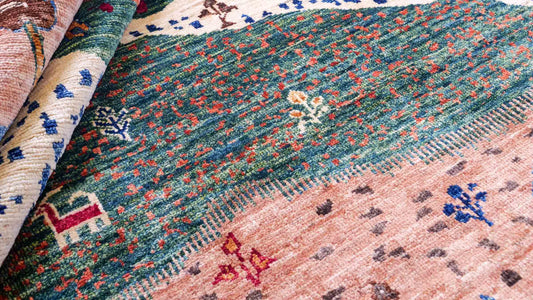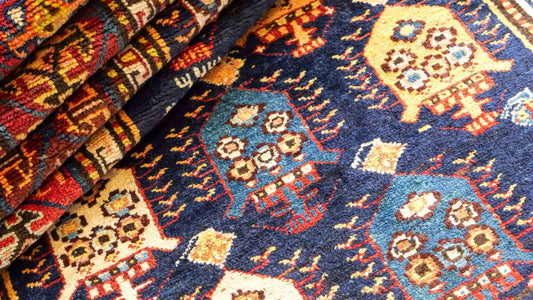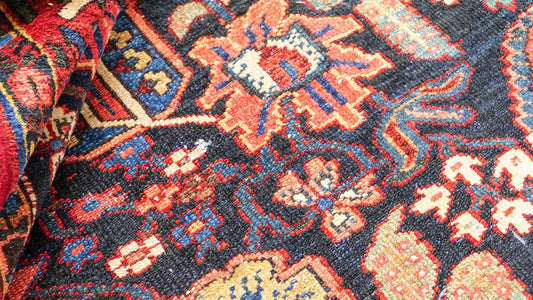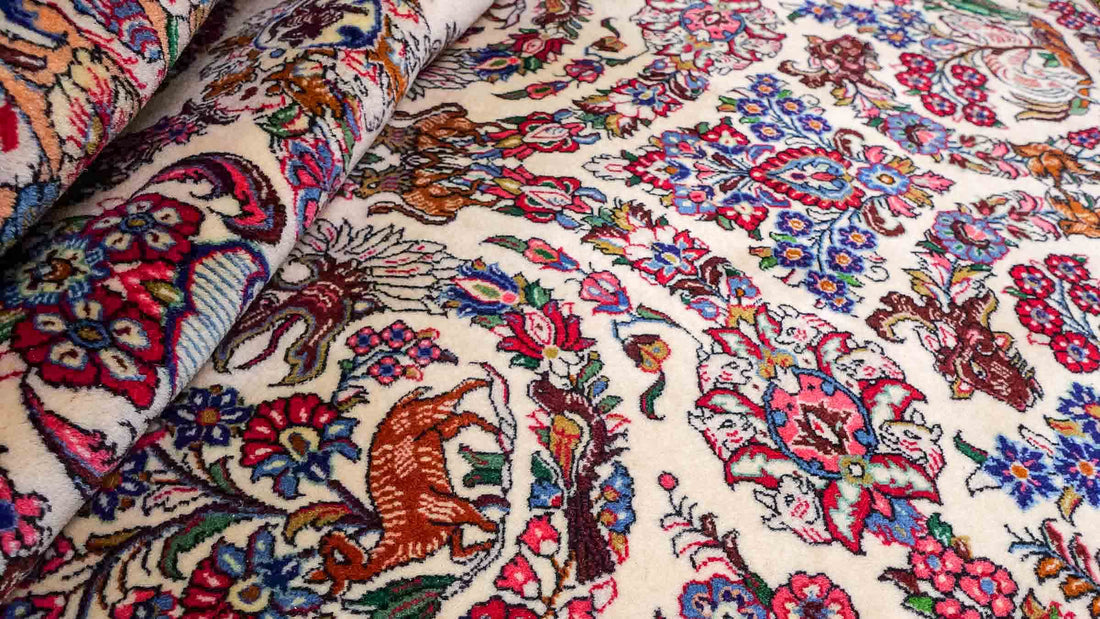
Ilam
Daniel KhademiImmerse yourself in the fascinating world of Ilam rugs—authentic masterpieces of Persian craftsmanship admired for their intricate patterns, vibrant colors, and deep-rooted traditions. In this article, discover the geographical context, history, social significance, and manufacturing process of these unique rugs. Find out why a hand-knotted Ilam rug is both a stable investment and a valuable enhancement for your living space.
Ilam Rugs: Key Facts at a Glance
- Origin: Ilam, Western Iran (Province of Ilam / Elam), a historic region with a rich cultural heritage
- Material: High-quality sheep’s wool; natural, regional dyes
- Knot Density: 200,000 – 300,000 knots/m² (robust, detailed, durable)
- Design & Patterns: Floral ornaments, large medallions, geometric and oriental patterns, delicate arabesques
- Color Palette: Deep red, blue, and beige shades, as well as natural colors
- Characteristics: Large formats, high attention to detail, exceptional color brilliance, collector’s and connoisseur’s pieces
- Suitable Spaces: Living & dining rooms, prestigious areas – perfectly suited for both classic & modern interiors
Explore our curated collection of exclusive Ilam Rugs & Designs —find your one-of-a-kind masterpiece today!
The Origin and History of Ilam Rugs
Distinctive Features of the Ilam Region
Ilam is located in a mountainous region in western Iran, known for its breathtaking landscapes and fertile soil. This area provides ideal conditions for sheep farming, which leads to the exceptional quality of wool used in Ilam rugs. The temperate climate and rich soils create an excellent foundation for the materials used in rug making. Herbs and plants that grow in the region provide many natural dyes, giving the rugs their vibrant and sustainable colors.
The Emergence of Ilam Rugs
The tradition of rug weaving in Ilam goes back centuries and is closely tied to the region’s cultural roots. In ancient times, Ilam was renowned for its artistic rugs and reached a peak during the Safavid dynasty. The influence of numerous trade routes led to exciting cultural exchanges, which fostered the development of unique design features and techniques in rug making. Ilam rugs often combine geometric forms with a tribal flair, reflecting the traditional lifestyle of the people.
The Manufacturing Process of Ilam Rugs
Craftsmanship and Premium Materials
Ilam rugs are traditionally made of high-grade wool and cotton. The wool comes from local sheep breeds and is dyed with natural colorants. The production process includes several steps: from shearing the sheep, dyeing the wool, designing the patterns, to knotting the rug.
The Knot Density of Ilam Rugs
With a knot density of over 200,000 knots per square meter, Ilam rugs display impressive detail, marking them as a sign of true artisanal skill. Some Ilam rugs use specific knotting techniques that give them a special texture. These methods differ from other regional rugs and require exceptional craftsmanship.
Patterns, Designs & Colors of Ilam Rugs
The Aesthetic of Ilam Rugs
The design of Ilam rugs is striking for its variety of geometric and floral motifs, often with creative references to nature. Their colors range from vibrant reds and blues to warm beige tones, underlining the region’s cultural heritage. Compared to rugs from other provinces, Ilam rugs typically feature a more rustic and authentic character that emphasizes their craft.
Regional Differences and Styles
Within the Ilam region, there are various styles and designs influenced by local artisans and the community’s cultural traditions. This diversity can be seen in different patterns, color palettes, and knotting techniques used in these rugs. For example, distinctive large medallions and floral borders are often found, varying between families and tribes. These different approaches reflect regional identity and give each rug its unique character.
Design Classics Compared: Ilam, Kerman, Kashan & Moud Rugs
| Feature | Ilam | Kerman | Kashan | Moud |
| Origin | Western Iran, Ilam / Elam Province | Southeast Iran, Kerman Province | Northeast Iran, Isfahan Province |
Eastern Iran, South Khorasan Province |
| Material | Premium sheep's wool | Premium sheep's wool | Premium sheep's wool, rarely silk | Premium sheep's wool |
| Knot Density | 200,000 – 300,000 knots/m² | 160,000 – 1,200,000 knots/m² | 120,000 – 600,000 knots/m² | 160,000 – 300,000 knots/m² |
| Design | Floral and geometric, medallions | Floral and geometric medallions, mirror motifs | Floral and geometric medallions, tableaus |
Floral and geometric medallions, tribal designs |
| Colors |
Reds, blues, earth tones, natural dyes |
Reds, blues, earth tones, natural dyes |
Reds, blues, greens, earth tones, natural dyes |
Reds, blues, earth tones, natural dyes |
| Features |
Authentic, lively patterns |
High-quality, detailed, unique designs |
Naturally produced, long-lasting |
Rustic, tribal, artisanal, authentic |
| Value/Price Range |
Mid-range, growing interest |
Mid to premium range, collectors’ items |
Mid to premium range, investment grade |
Mid-range, value stable |
Checklist: How to Recognize a Real Ilam Rug
- High-quality sheep’s wool, fine and lustrous ✔
- Natural, luminous colors, no chemical odors ✔
- Very high knot density (minimum 200,000 knots/m²) ✔
- Floral & geometric patterns with medallion or all-over designs, clean finish ✔
- Pattern clearly visible on the reverse—a sign of handcraftsmanship ✔
- Neat fringes and sharp edges, no visible flaws ✔
- Certificate of authenticity and origin included ✔
Styling Tips: Showcasing Ilam Rugs with Style
Ilam rugs integrate seamlessly in traditional and rustic décor schemes. They harmonize beautifully with wooden furniture and antique decorations, but can also be used in contemporary settings to create a warm and welcoming ambiance. Pair them with light or neutral tones to achieve an elegant and stylish atmosphere.
Care & Longevity: Preserving Your Ilam Rug
How to Keep Your Ilam Rug Beautiful for Years:
- Vacuum regularly, but do not beat
- Treat stains immediately with lukewarm water & a cloth
- Avoid direct sunlight
- Professional cleaning recommended every 1–2 years
- Find more care tips in our blog post: *How to Care for Hand-Knotted Rugs*
Ilam Rugs: Collector’s Items & Investment Potential
By purchasing a Ilam rug, you are investing not only in a beautiful work of art but also in valuable craftsmanship of deeper worth and historical significance.
- Appreciation: Especially high-quality Ilams have the potential to increase in value over time. This stems from various factors, including knotting technique, material selection, and design rarity. Like many works of art, well-preserved antique Sarouks become sought-after collectibles, commanding significant appreciation on the market and making them attractive as investment assets.
- Collector’s Items: Ilams are excellent for collectors due to their variety of styles, designs, and sizes. A carefully chosen Ilam rug not only tells a story but also becomes a treasured heirloom to be passed down through generations.
The market for handmade rugs is steadily growing, as more people recognize the uniqueness and emotional value of craftsmanship. Ilam rugs unite art, history, and functionality in a unique way. They are not just an asset for any home, but also a valuable item that tells stories and can endure for generations. In a world increasingly dominated by mass production, individually crafted works of art are becoming ever more significant and valuable.
► For detailed tips & in-depth guidance, see our blog post: *Are Hand-Knotted Rugs a Good Investment?*
Request a personal style & purchase consultation for Ilam rugs now!
FAQ — Frequently Asked Questions about Ilam Rugs
What distinguishes a genuine Ilam rug?
► Elaborate handcraft, high-quality wool, high knot density, vibrant natural colors, floral and geometric designs, clear pattern on the reverse, certificate of authenticity.
Are Ilam rugs suitable for everyday use and families?
► Yes, thanks to durable fibers and traditional techniques.
How do I properly care for my Ilam rug?
► Vacuum carefully, do not use aggressive – especially not chemical – agents, and avoid direct sunlight. Regular professional cleaning will maintain their beauty and value. More in our blog post: *How to Care for Hand-Knotted Rugs*
Are Ilam rugs a worthwhile investment?
► Very fine and/or antique Ilam rugs with distinctive patterns are stable-value collector and connoisseur pieces. Read more in our blog post: *Are Hand-Knotted Rugs a Good Investment?*
Where can I buy authentic Ilam rugs?
► Only from specialist dealers and reputable online shops—always check for certificates of authenticity and expert advice. At JUPITER Intl, every hand-knotted, hand-tufted, and handwoven rug comes with a Certificate of Authenticity.
Conclusion: Ilam Rugs – Authentic Artistry
Ilam rugs combine traditional art, cultural depth, and the highest quality. They enrich any home with their beauty, history, and uniqueness. Invest in a hand-knotted original that inspires generations and creates lasting value.
Explore our curated collection of exclusive Ilam Rugs & Designs —find your one-of-a-kind masterpiece today!
Related blogs & blog posts you might also be interested in:
→ Design Classics, Countries of Origin, Carpet Materials, Carpet Guide

